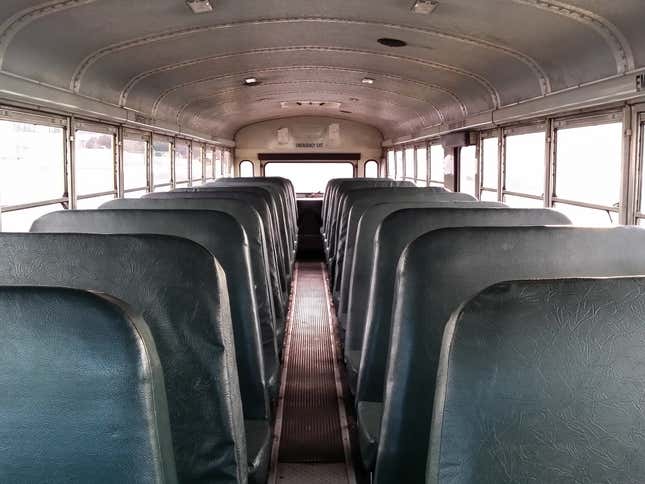Here's Why School Buses Haven’t Changed Much Since 1939

While car design has changed radically over the decades, school buses look almost the same as they did nearly 100 years ago. Sure, they now carry more safety tech, but the big yellow bus with the bulbous front end has endured since 1939. It turns out, it’s not lack of imagination or nostalgia that have kept school buses constant, but standardized guidelines that have proven incredibly effective in keeping American children safe. As a result, school buses are one of the safest vehicles on the road. The standardized guidelines that require school buses to be painted in their classic yellow and black theme, have big flashing lights, and fold-out stop signs have made school buses immediately recognizable to everyone on the road, and drivers know to drive carefully around big yellow people movers.
Toyota Unveils The Sixth Generation 4Runner
Prior to 1939, there were no standardized requirements for school buses. As cars rapidly came into popularity, school children went from riding to school in horse drawn carriages called school wagons, to hitching rides on the newly motorized school bus, though school bus was a generous term. These wood-bodied trucks looked more apt to carry livestock than precious children. There were no safety standards for these buses, so some kids had to climb up into the back of the high riding bus, and on-road catastrophes were more frequent. Still, school buses were important as they allowed children in rural towns across America to gain reliable access to education, though of course since this is America, Black students were discriminated against and subjected to segregated school transport.
In 1939, Frank Cyr, a rural education specialist at Columbia University, led a conference of transportation officials, school bus manufacturers and educators to establish the minimum standards for school buses. These standards included length, aisle width requirements, and school buses’ signature yellow color.
Today, Modern school buses are governed by the National Congress for School Transportation or NCST, which sets standardized requirements for school transportation services across the country. School bus safety requirements include a back-up alarm, anti-lock brakes, standardized emergency exits, and accommodations for wheelchair accessibility.
Buses are required to be constructed to withstand an intrusion force equal to the curb weight or 20,000 pounds, whichever is less. Since school buses are so big and heavy especially when loaded with passengers, school buses usually fare very well in accidents. Despite the lack of a seat belt requirement, larger school buses have been designed using an NHTSA-approved concept called compartmentalization which requires the interior of buses to protect children with strong closely-spaced seats with energy absorbing seatbacks. Small school buses with a gross vehicle weight rating of 10,000 pounds or less must be equipped with seat belts since they are lighter than larger buses. Despite their antiquated looks, modern school buses are actually incredibly safe, 70 times safer than a normal car according to the National Highway Traffic Safety Administration or NHTSA.
Accident statistics show that only 71 passengers were killed in school bus crashes over a nine year period between 2008 and 2017, and that figure includes more than 26 million daily school bus riders across the country. American school buses are also kept safe before an accident occurs thanks to their signature standout yellow color, flashing lights, and stop signal, all required by National School Transportation Specifications and Procedures. These required features help school buses stay safe since American drivers know to be extra mindful around vehicles with these immediately recognizable signs. Smaller buses are required to have seat belts to keep students safe in the event of an accident due to their smaller size and increased vulnerability
Though modern school buses might not immediately appear much different than the big yellow buses that ferried our grandparents to school houses in the old timey days, important safety features and hidden engineering continue to make school buses the safest form of on-road transportation. Thanks to the clear visual indicators that make school buses stand out from other vehicles on the road and carefully engineered safety features, school buses just haven’t had to change much over the years.




